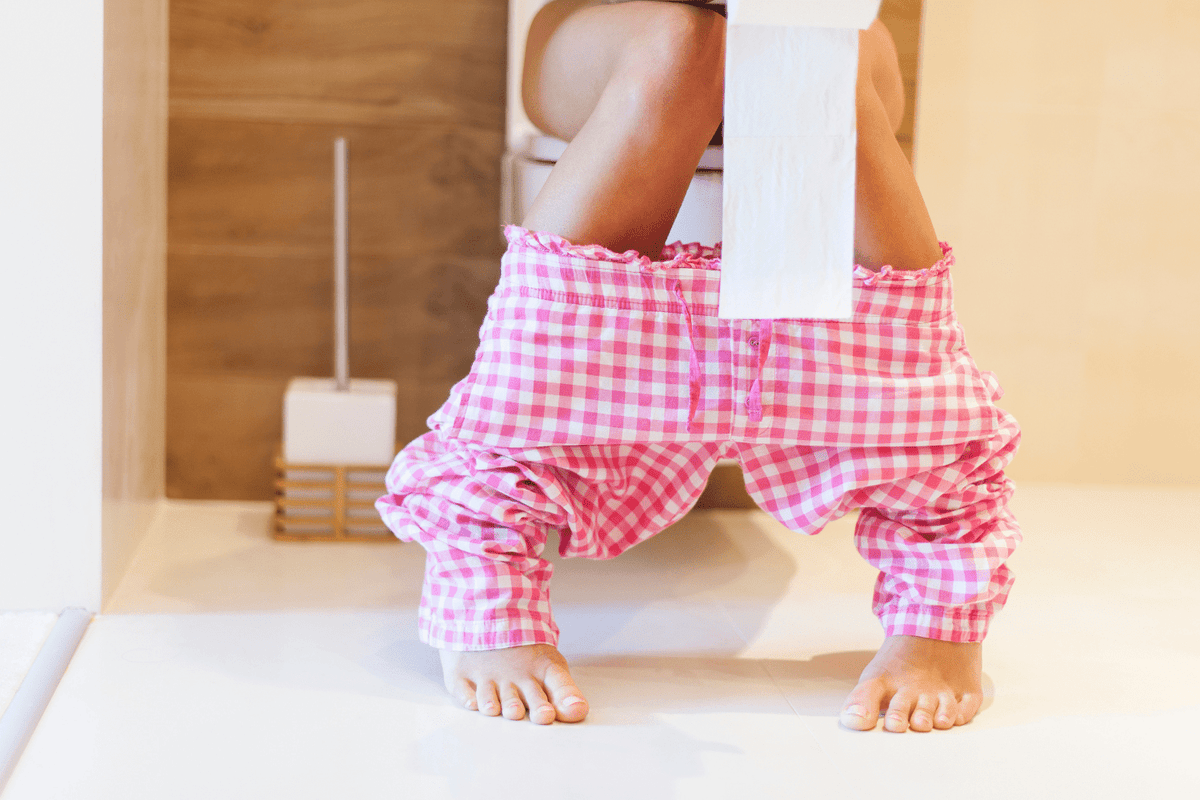
Hacks and Tips to Support Your Body for the First Postpartum Poop
|
3 min
|
3 min
Giving birth is a major accomplishment, but many new moms are caught off guard by one often overlooked postpartum challenge: the first poop. Yes, the first bowel movement after childbirth can be daunting due to pain, discomfort, or fear. Fortunately, there are practical ways to prepare your body and ease the process. In this article, we’ll explore various tips, hacks, and practices to make that first postpartum poop less stressful and more manageable.
One of the simplest ways to make bowel movements easier is to stay well-hydrated. After childbirth, your body needs extra fluids, especially if you’re breastfeeding. Water helps soften stools, making them easier to pass. Aim to drink at least 8-10 glasses of water per day, but you can also include electrolyte-rich drinks like She’s Thirsty ® to keep your body replenished.
Try having a warm glass of water or herbal tea like Tea-Tas ® in the morning. This gentle start can naturally stimulate bowel movements.
Eating high-fiber foods is another great way to keep things moving smoothly. Fiber helps bulk up stool and makes it easier to pass. Consider incorporating foods like oats, flaxseeds, chia seeds, whole grains, leafy greens, and fresh fruits into your meals.
A bowl of oatmeal topped with berries and chia seeds.
Whole wheat toast with avocado or almond butter.
Smoothies packed with spinach, flaxseed, and apples.
Many women stop taking their prenatal vitamins after giving birth, but continuing them postpartum can be beneficial, especially those containing iron. Make sure your prenatal supplement is balanced with extra hydration and fiber intake to offset potential constipation.
If iron seems to be causing significant constipation, ask your doctor about switching to a lower dose or a different form of iron that may be gentler on your system.
Doctors often recommend a stool softener after childbirth, especially if you’ve had a tear, episiotomy, or C-section. Stool softeners help make stools easier to pass without straining. These over-the-counter options can prevent discomfort and reduce the fear of putting pressure on sore areas. Be sure to follow your healthcare provider’s advice on how long to use stool softeners.
A simple trick to help with bowel movements is to elevate your feet while sitting on the toilet. Using a small stool, like a Squatty Potty, creates a squatting position, which is a more natural way for the body to eliminate waste. This position helps align the colon for easier, faster, and more comfortable bowel movements.
Place a small stool or stack of books under your feet while you sit on the toilet. Aim to have your knees slightly higher than your hips.
While it might be the last thing on your mind, gentle movement can help stimulate bowel movements postpartum. Walking, even if it’s just a short stroll around the house, gets your muscles moving and helps encourage digestion. If you’re recovering from a C-section, follow your doctor's advice on what level of movement is safe.
Gentle stretching or yoga
Walking around the house
Pelvic floor exercises (which also support bowel movements)
Tension in your body can make passing a bowel movement more difficult, especially when you're anxious about pain. Try to practice deep breathing or relaxation techniques before and during bathroom trips. This can help relax your pelvic floor muscles, making it easier to go without straining.
Inhale deeply through your nose for four seconds.
Hold your breath for four seconds.
Exhale slowly through your mouth for eight seconds. Repeat this a few times to help calm your mind and body.
Don’t rush the process. If the urge to go isn’t there yet, give yourself time. Forcing a bowel movement or pushing too hard can lead to more discomfort or complications like hemorrhoids. Remember, it’s completely normal for your first postpartum bowel movement to take a few days. Your body is still adjusting, and it’s important to be patient with the process.
If you’ve had any tearing or perineal discomfort, the fear of pain during that first bowel movement can be overwhelming. Using witch hazel pads or postpartum sprays can soothe and reduce swelling. Some moms find applying these products before and after using the toilet to be helpful.
Cooling perineal pads (sometimes called "padsicles") can be placed in your underwear to soothe the area while you wait for that first bowel movement to come.
The way you sit can also affect how easy it is to go. Try leaning forward slightly when you're on the toilet, with your elbows resting on your knees. This can help align the rectum and give you more control without straining.
Sit with your feet on a stool.
Lean slightly forward.
Keep your back straight and relax your abdomen.